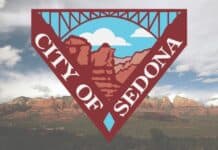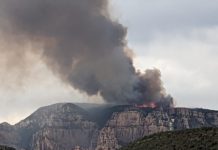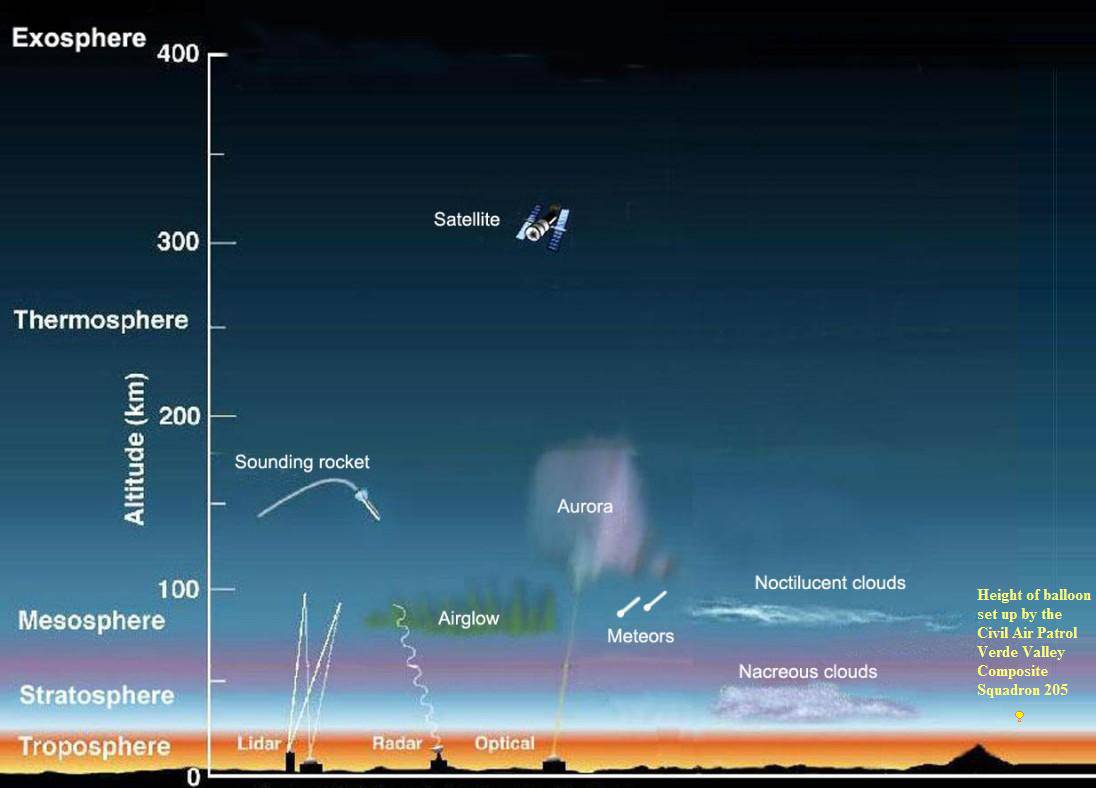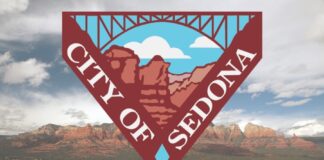Traveling 16½ miles is not far — about the distance between Sedona and Cottonwood — but it seems a very long way straight up.
The Civil Air Patrol Verde Valley Composite Squadron 205 in Sedona launched its first space balloon at sunrise Nov. 12 from a field along Forest Road 525 south of the city. The large latex balloon filled with helium rose with a payload that encased a video camera, a GPS device and other recording and transmitting equipment. The purpose was to record video and audio from liftoff to landing.
A few minutes after liftoff, transmission failed. There was no way to get it back and fix it, according to Aerospace Education Officer 2nd Lt. Prahas Nafissian.
The cadets left with their senior officers. Nafissian and Project Engineer Lt. William Tripp used a Northern Arizona University computer model to predict the balloon’s trajectory and landing site. A search team went out but came back empty-handed.
After nearly seven hours of problem solving, at 2:45 p.m., they shut down the tracking station.
“About 10 p.m. I decided to check the system again. To my surprise the system started receiving signals again around 3:15 p.m.,” Nafissian said. “We found the GPS satellite system itself had gone off-line just minutes after our launch.”
On Nov. 14, after recalculation, the team went out and found the payload and shredded balloon 130 miles northeast of Sedona.
CAP is an auxiliary of the U.S. Air Force. Part of the squadron’s cadet program is aerospace education.
Once back to the squadron’s headquarters at the Sedona Airport, its eight cadets started studying the information.
“We found out it went into subspace, around 90,000 feet,” said Cadet 2nd Lt. Bethany Cathcart, who is a student at American Heritage Academy in Cottonwood.
 Other data reported the balloon withstood winds of at least 100 miles per hour, along with information of the balloon’s ascent and travel path. The photographs were fascinating to the group, especially ones that showed the curvature of the earth and those of recognizable features like the San Francisco Peaks and Meteor Crater.
Other data reported the balloon withstood winds of at least 100 miles per hour, along with information of the balloon’s ascent and travel path. The photographs were fascinating to the group, especially ones that showed the curvature of the earth and those of recognizable features like the San Francisco Peaks and Meteor Crater.
“This is a great aerospace education and the project will be good for recruiting other cadets,” Cadet Airman 1st Class Tyler Melton said. “Me, I think it’s just awesome.”
The squadron plans to use the project for themselves but in local middle and high schools.
“We all had some part in the project,” Cathcart said.
The earth has five levels, or layers, of atmosphere above its surface. The troposphere is from 3.7 miles to 12.5 miles up. Most airplanes stay at the bottom of this level. The stratosphere, where the balloon reached its peak, is the next level up to 31 miles. The mesophere is after that, reaching up to 52.8 miles. The next level is the thermosphere, reaching up to 428.7 miles above Earth. This is where the space shuttle orbits. The outermost and largest level is the exosphere, reaching to 6,213.7 miles.
Tripp was inspired to undertake the weather balloon project after seeing a video of another group’s project. Planning and preparing the project took nearly one year.
The CAP squadron has been active in Sedona for 32 years. Many cadets went on to careers in the military. Everyone involved is a volunteer, Camus said.
“We would be happy to accept new adult and youth members. Any school interested in our weather balloon presentation can also call me at 301-3755,” Camus said.
Melton is a home school student and said CAP interested him because of the great leadership opportunities. He wasn’t thinking about the U.S. Air Force at first.
“Now that I’ve been in a couple of years, I’d like to join. My goal would be as an air traffic controller,” Melton said.
Cathcart likes the training.
“I really like the drill, the discipline and the structure. It gives you a stepping stone for any career,” Cathcart said.



















